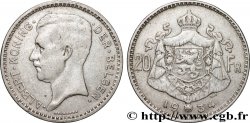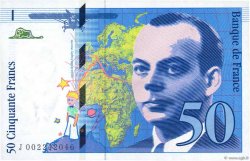E-auction 143-82843 - fwo_378154 - BELGIUM 1 Franc Léopold Ier tête laurée 1835 Bruxelles
Чтобы принять участие в торгах, вы должны войти в систему и стать подтвержденным участником аукциона. Войдите, чтобы сделать ставку. Ваш аккаунт будет подтвержден в течение 48 часов. Не ждите до закрытия торгов, чтобы зарегистрироваться.Сделав ставку на данный товар, вы вступаете в юридическое соглашение на покупку выбранного товара и нажатием кнопки «Сделать ставку» подтверждаете принятие вами условий интернет-аукционов cgb.fr.
Ставка может бить сделана только в полном эквиваленте евро. Торги закроются согласно времени, указанному в описании товара, все ставки, сделанные после закрытия торгов, учитываться не будут. Не следует откладывать предложение вашей ставки до последнего момента, так как система может не успеть обработать вашу заявку, и ваша ставка не будет принята. Более детальную информацию вы найдёте здесь: FAQ по интернет-аукционам.
БЕСПЛАТНО.
БЕСПЛАТНО.
| Оценить : | 50 € |
| Цена : | 9 € |
| Максимальная предлагаемая цена : | 10 € |
| Конец торгов : | 11 January 2016 17:42:30 |
| Участников : | 5 Участников |
Тип 1 Franc Léopold Ier tête laurée
Дата: 1835
Монетный двор / Город: Bruxelles
Количество отчеканенных монет: 861000
Проба: 900 ‰
Диаметр: 23 mm
Ориентация осей монеты: 6 h.
Вес: 4,62 g.
Век: cannelée
Редкость: R1
Ссылки в каталоге: :
Лицевая сторона
Аверс: легенда: LEOPOLD PREMIER - ROI DES BELGES.
Аверс: описание: Tête de Léopold Ier à gauche, coiffée de la couronne de chêne ; signé BRAEMT. F sur la tranche du cou.
Обратная сторона
Реверс: легенда: 1/ FRANC/ 1835/ *.
Реверс: Описание: dans une couronne de chêne.
Комментарий
Ce type a été frappé entre 1833 et 1844, suite à la loi du 5 juin 1832. Il ne fut démonétisé que par la loi du 7 mars 1867. La quantité officiellement refondue pour ce type laisse hors refontes officielles plus de 18% de l'émission. Les monnaies belges étant d'une très grande rareté - et tout particulièrement ce modèle - on peut en déduire plusieurs comportements. Tout d'abord que la refonte privée était combattue avec moins d'énergie en Belgique qu'en France, puisque, à frappe, date et type comparables, les monnaies belges sont beaucoup plus rares que les monnaies françaises. Par ailleurs, que les tensions de prix entre l'argent et l'or, celui-ci devenant relativement moins cher que l'argent, déclencha dans les années 1860, ont vu une recherche systématique des divisionnaires en 900 millièmes de pureté, payées en or, fondues, revendues contre de l'or au prix du métal argent, supérieur à la valeur faciale fondue. Il faut donc imaginer des milliers de caissiers prélevant systématiquement dans la circulation toutes ces monnaies de Léopold Ier pour comprendre leur rareté actuelle..
This type was minted between 1833 and 1844, following the law of June 5, 1832. It was only demonetized by the law of March 7, 1867. The officially remelted quantity for this type leaves more than 18% of the issue outside official remelts. Since Belgian coins are extremely rare - and this model in particular - several behaviors can be deduced. First of all, private remelting was fought with less energy in Belgium than in France, since, with comparable mintage, date and type, Belgian coins are much rarer than French coins. Furthermore, the price tensions between silver and gold, the latter becoming relatively cheaper than silver, triggered in the 1860s, saw a systematic search for divisionaries in 900 thousandths of purity, paid in gold, melted down, resold for gold at the price of silver metal, higher than the melted face value. We must therefore imagine thousands of cashiers systematically removing all these coins of Leopold I from circulation to understand their current rarity.
This type was minted between 1833 and 1844, following the law of June 5, 1832. It was only demonetized by the law of March 7, 1867. The officially remelted quantity for this type leaves more than 18% of the issue outside official remelts. Since Belgian coins are extremely rare - and this model in particular - several behaviors can be deduced. First of all, private remelting was fought with less energy in Belgium than in France, since, with comparable mintage, date and type, Belgian coins are much rarer than French coins. Furthermore, the price tensions between silver and gold, the latter becoming relatively cheaper than silver, triggered in the 1860s, saw a systematic search for divisionaries in 900 thousandths of purity, paid in gold, melted down, resold for gold at the price of silver metal, higher than the melted face value. We must therefore imagine thousands of cashiers systematically removing all these coins of Leopold I from circulation to understand their current rarity.








 Cообщить об ошибке
Cообщить об ошибке Распечатать страницу
Распечатать страницу Отправить мой выбор
Отправить мой выбор Задать вопрос
Задать вопрос Consign / sell
Consign / sell
 Информация
Информация














